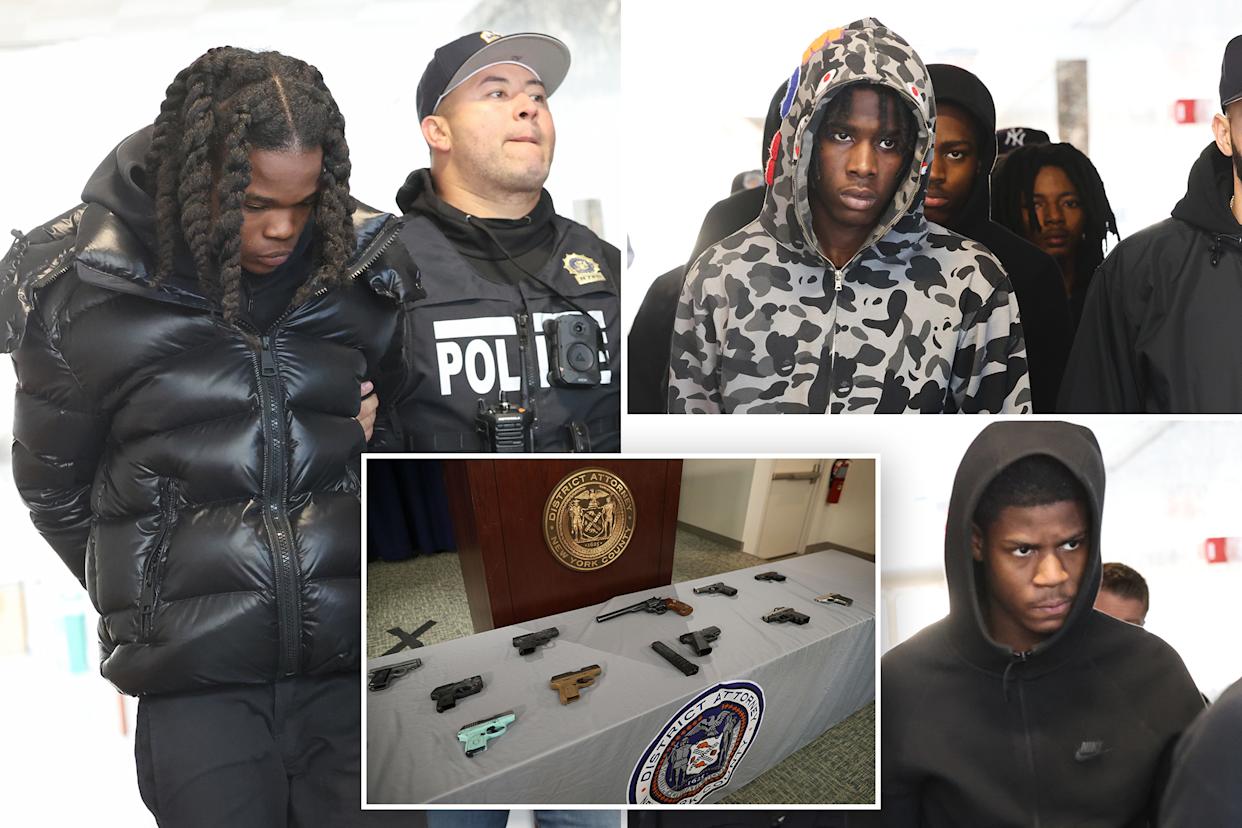In a major breakthrough, 16 teenagers were arrested in New York City for their involvement in a violent gang that wreaked havoc on neighborhoods, particularly in the Bronx. The teens, aged 14 to 17, were part of a group responsible for months of gun violence that shook local communities. These arrests, made possible by a coordinated effort between the NYPD, FBI, and other agencies, are being hailed as a victory for public safety, but also raise important questions about the challenges facing these young offenders and the broader issues fueling the violence.
Neighborhoods Under Siege
The residents of the Bronx lived in constant fear throughout late 2023 and into early 2024. The gang, known as the “Wolfpack,” engaged in a string of shootings that often took place during the day, leaving both innocent people and businesses in danger. For months, the sound of gunshots became a part of daily life, and many felt they had no choice but to stay inside, especially children and parents. One resident recalled the terror of seeing kids running away from gunfire in broad daylight.
“Every time you heard a car screeching, you didn’t know if it was someone just speeding through or if shots were going to ring out,” said one local mother, who had to keep her children inside most days. “It felt like living in a warzone.”

The Wolfpack, mostly made up of young teenagers, didn’t hesitate to use violence to assert control over their turf and settle disputes with rival groups. Their acts were not just limited to shootings—they also robbed people and were involved in illegal activities like drug dealing. As the violence increased, local businesses had to shut their doors temporarily, afraid to risk the safety of their employees and customers.
The Young Gang Members Behind the Violence
What shocked many about the Wolfpack gang was the age of its members. These weren’t hardened criminals, but young teens, many still in high school. Some had joined the gang seeking belonging, while others were pushed into it due to circumstances at home or on the streets. Many of the older members of the gang took advantage of the younger teens, giving them orders to carry out shootings or engage in other violent activities.
“They were just kids trying to find their place in the world, but instead of being guided to better paths, they were sucked into a world of violence,” said a community activist who works with troubled youth. “Most of them weren’t born bad—they got involved with the wrong people.”
Despite their youth, these teens had access to high-powered weapons, which made their actions all the more dangerous. They used social media to brag about their exploits, showing off guns and challenging rival groups. The more they shot, the more they gained a reputation, and the harder it became for them to escape the cycle of violence.
The Arrest Operation
The operation that led to the arrests of the 16 gang members took place early one Tuesday morning. Law enforcement from multiple agencies, including the NYPD and the FBI, moved in swiftly and quietly, raiding homes and apartments across the Bronx. The plan was to strike fast, before the gang members could flee or destroy evidence. The raids were the culmination of months of investigation, with law enforcement using wiretaps, surveillance, and undercover agents to build a case.
The charges against the teens are serious, including attempted murder, conspiracy, and illegal possession of firearms. As they were led away in handcuffs, many of the teens showed little emotion, some even appearing to smirk. It was clear that they had become desensitized to the consequences of their actions.
One of the key findings during the investigation was the discovery of an illegal firearms trafficking network. Authorities uncovered that the Wolfpack was receiving firearms from an underground pipeline, further demonstrating the scale of the gang’s operations and the threat they posed.
A Community’s Relief and a Larger Conversation
While the arrests have been welcomed by residents, the situation has sparked important conversations about how to address the root causes of gang violence. Many in the community are relieved that the teens behind these crimes are off the streets, but there’s also a sense of unease about what will happen next.
“They were terrorizing us for months. It’s good they’re arrested, but what about the next group of kids who pick up where they left off?” said a local business owner who has seen firsthand the damage caused by the violence.
Experts warn that simply locking up young offenders will not solve the larger problem. They point to the lack of opportunities, resources, and support for young people, especially in high-crime areas like the Bronx. Without intervention, there will always be another group ready to step into the void left by gangs like the Wolfpack.
“There’s a broken system here,” said a youth advocate. “These kids don’t just wake up one day and decide to commit crimes. They are products of a society that hasn’t given them a real chance. If we don’t address the reasons why these kids join gangs—poverty, lack of education, fractured families—we’re just going to keep seeing this cycle continue.”
A Call for Change
As the legal process unfolds for the 16 teens arrested, their cases will likely raise questions about how the justice system should handle young offenders. Should they face adult penalties, or should efforts focus more on rehabilitation and helping them reintegrate into society?
While many agree that accountability is important, there’s a growing recognition that we must also focus on breaking the cycle of crime before it starts. Community leaders are calling for more programs to engage youth in positive activities, like after-school programs, job training, and mentorship. Only by addressing the broader social issues at play can the city hope to prevent future generations from falling into the same traps.


Comments are closed, but trackbacks and pingbacks are open.